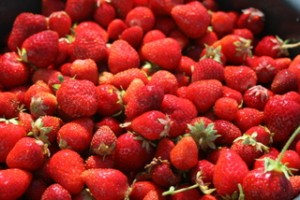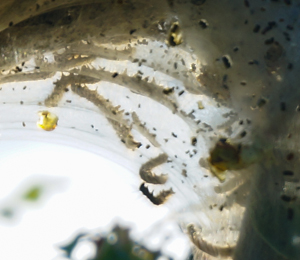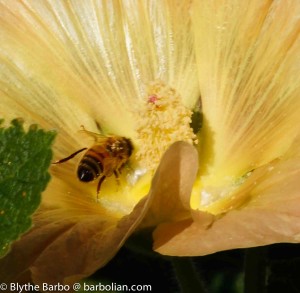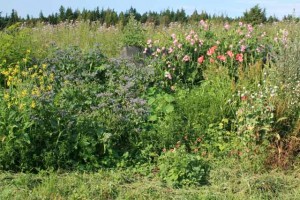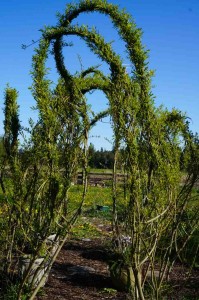So many questions! We have to divide them into categories that follow Bill Mollison’s Three Ethics and the 12 Principles presented by David Holmgren.
Overarching Questions
- When goals are clearly articulated, it is easier to identify questions and what might be needed to reach goals. So the first question is, what are the main goals AND do they make sense?
- What are the core issues of food, water, shelter, and energy – and how might they be better addressed?
- How can we meet both our own needs and the needs of the environment?
- What are our time and budget constraints? How might we reduce costs of time and money?
Application of Mollison’s Key Ethics and Principles:
- How is every element of our project in alignment with Mollison’s 3 ethics: Care of the Earth, Care of People, and Setting Limits to Population and Consumption and Giving Back to the System?
- Work WITH nature: How do we work with nature rather than try to impose our control on something to create a vision that might be against what would naturally be there? What makes sense – and what not?
- The problem is the solution; everything works both ways. Everything is a positive resource. When there is a perceived problem, how can we look at it from a different angle to see it as a solution to something else? (e.g., snails in the greenhouse: raise escargot?)
 Make the least change for the greatest possible effect: What might we do that will give the greatest return for the effort? (e.g., can we organize or situate things to minimize effort; can we create guilds that take care of themselves; can we make initial investments in energy savings and re-use that give us high long-term paybacks?)
Make the least change for the greatest possible effect: What might we do that will give the greatest return for the effort? (e.g., can we organize or situate things to minimize effort; can we create guilds that take care of themselves; can we make initial investments in energy savings and re-use that give us high long-term paybacks?)- The yield of a system is theoretically unlimited: If yields are theoretically unlimited, how do we be mindful that we take only what we need (ethic #3) and give back the rest? What are we doing wrong that can limit the yield, and what might we do right to enhance the yield?
- Everything gardens, or has an effect on its environment: With the idea of “everything gardens,” how can we enhance these processes? (e.g., microbial communities, native plants to encourage wildlife, etc.)
- Where are our opportunities to give back – both to the system and to others?
- How do we leave our place better than how we found it (wherever we go)?
Site Analysis & Design:
Many of the questions here involve schematics: property boundaries, size, orientation, surrounding area (watershed and nearby use), historic and legal issues, SWOT analysis / pros and cons, etc.
- Sectors: How does the sun change across the sky during the day and also throughout the year? What are our weather patterns, and how can we better deal with the westerly winds? (or turn a problem into a solution?) What are the extremes in wet winter/dry summer precipitation levels and temperatures, and how does that affect our design choices? How can we capture rain during the rainy season to carry over to dry times?
- Slope: How do we apply permaculture design tools to basically flat land? Is there an advantage to a swale?
- Zones: How are the zones on this site defined; how do they overlap; what can we do to make things more logical and efficient?
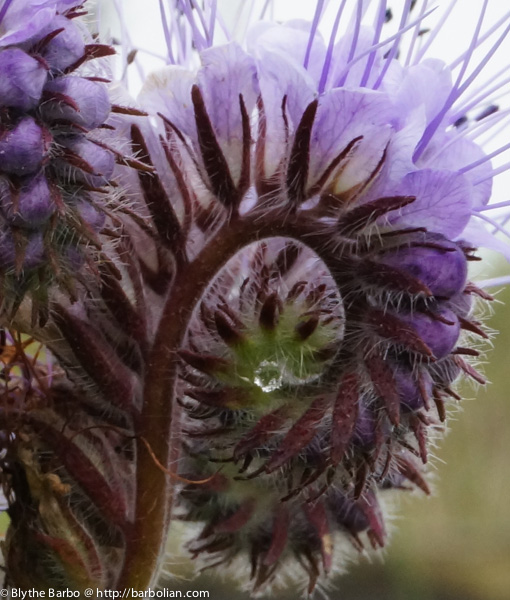 Patterns, natural cycles, processes: What do we see – how do these patterns interact, connect, affect one another? When do various insects emerge? What are the migration patterns of birds?
Patterns, natural cycles, processes: What do we see – how do these patterns interact, connect, affect one another? When do various insects emerge? What are the migration patterns of birds?
Catch & Store Energy
- Earth – wind – sun – water: Each can be a hindrance or an asset. Soil erosion or earth protection. Wind and sun exposure – or wind and solar energy capture. Water flooding or capture, re-use, and conservation. How do we use natural energies to our advantage? What can we plant, build, or move (including earth) to best manage incoming energy, and what ecosystems do we create or change in the process?
- Where are the energy sources? How can we harness more of the available energy? Is solar or wind energy feasible? Crunch the numbers and make contacts!
- What requires the most energy input? Where are the energy leaks and how can we stop them?
- What fast growing plants can we grow, scythe, and turn back into building our soils?
- Our site is relatively small – what trees and shrubs can we plant and where so as to provide the most benefit (yield, creating microclimate, not blocking the mountain view, providing wind protection, etc.)?
- Where can we create more ponds and rain gardens for storing rainwater in the landscape?
Obtain a Yield
- What do we really need? How do we define yields? What do we want to achieve or gain (return to goals)? What things can we do to meet our own needs (food, energy, medicine, materials) – and what things might meet the needs of the environment (soil enrichment, plants for pollinators, native plants for food and shelter for birds and small mammals, etc.)
- What would be the most cost-effective yields in terms of time, energy, money, and effects to the ecosystem? What would be the most cost-effective products both for our own use and for commercial sales and bartering?
- How might yields change with the evolution of the system?
- How can we make things more efficient and increase our yields (more to share or put back into the system)?
Self-Regulate & Accept Feedback
- In looking at this old farmstead, how can we best regenerate it to a more viable ecosystem?
- What indicators are there that things are out of balance? (e.g., invasion of tent caterpillars; thousands of bald-faced hornets eating aphids). What steps do we take to correct imbalances, or, knowing we don’t understand the full complexity of the system, do we stand back and let nature self-correct?
- Are there places where we have taken too much out of a system without putting back in? (Ethic #3: limit consumption) Are there natural systems that have been damaged or degraded and, if so, how can we rehabilitate them?
- Are we attempting things that don’t work and determinedly trying again and again – or do we accept that something isn’t working and try a different approach?
- What kinds of back-up systems are there for when something goes wrong?
- How do functions support elements and elements support functions? Multiple connections build self-regulation and resiliency into a system and help bring it back to homeostatic levels, particularly when it is hit by extreme events.
- What do we really need? How can we live more simply and in tune with nature?
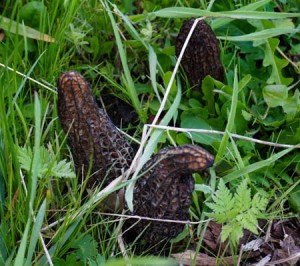 Use and Value Renewable Resources
Use and Value Renewable Resources
- In what ways are natural systems a part of the overall design? How do they help us move toward sustainability – or how can overconsumption deplete these resources?
- Living soil is key to a healthy ecosystem – what are we doing to build the soil (and what more can we do)? How can we create better composting systems, easier mulching (without always having to buy materials)?
- What wild plants, berries, and mushrooms can we forage?
- What trees and shrubs are good for coppicing? How can we grow more of these?
- What are the various sources of water? What systems can be set up to capture and use rainwater? How can water be repurposed? (Rainwater catchment tanks, rain gardens, greywater re-use system)
- What systems could be developed to route water more efficiently to gardens (and for gardens to use water more efficiently)? (e.g., drip lines, in-place water buckets, swales/ditches, rainwater or overflow beds)
- How can we consume less and live more simply to be less reliant on non-renewable resources?
- How can we reduce – if not eliminate – waste? What choices can we make that reduce waste (e.g., buying fewer packaged products) – or in what ways can we simply consume less?
- How can we build better composting systems – piles, chop & drop mulch, vermiculture, etc. – and how can we use animals to turn our waste into resources? (e.g., worms, birds – chickens, ducks, wild birds – rodents & rabbits, etc.)
- What are sources of pollution, how can we eliminate them – or quite possibly, turn them into a resource? (remember: oversupply of a resource is a form of pollution!)
- How can we upcycle “waste” into useful items – building materials or equipment, habitat elements, yard art, items possibly even for profit or barter? (e.g., upcycling pallets, bags, etc.)
 Design from Patterns to Details
Design from Patterns to Details
- What are the bigger picture patterns? How does the project site fit into the greater landscape? How does it connect to the watershed? Where is it relative to the mountains, the rivers, and the sea?
- What is the hydrology like for the area and for this site in particular?
- What are the weather patterns? How do they vary from nearby areas and throughout the year?
- What are the patterns of wildlife in the area – bird migration, coyotes, deer, small mammals, etc.
- What kind of native plants can be seen in the area and how are they indicators of soil, water, and climate conditions?
- What are the cyclic components (seasons, plant growth, wildlife populations, weather patterns, etc.) that affect the functioning of the system and yield?
- The sectors, zones, and guilds form the framework for the design; how do they interconnect? How do pathways facilitate these connections?
- What patterns do we see along the edges? How might they be enhanced?
- What natural patterns can we see within the system and what patterns might we create with our design that make sense? (meaning, not just for the sake of creating patterns, although they may have aesthetic value, but also to enhance functions, connections, and interactions, facilitate energy flow, make it easier to conduct various tasks, or serve a purpose, such as water catchment and dispersal, windbreak, etc.). How might patterns be used to take advantage of or temper various elements (e.g., minimize waste, provide frost protection, conserve water use, enhance interactions and yields, etc.)
- Soils: clay, sandy, loamy, rocky, pH – what are the patterns and how do they differ in different garden areas? How can we best match the right plant to the right conditions?
- Water and nutrient cycling: based on weather patterns, what are our best opportunities for rainwater harvesting? What are potential drainage problems, erosion, or other land-use issues? What specific things can we do to turn these “issues” into advantages?
- Earth sculpturing: On such flat land, how and where are the best ways and places to create pits, swales, berms, raised beds, and hugelkultur beds – what patterns might we create, and do these methods make sense in this situation? (i.e., don’t do a permaculture design method just for the sake of the method)
- What are the various microclimates in this system, and what are the corresponding niches of plants and animals in space and time? Where & how might microclimates be created to our benefit?
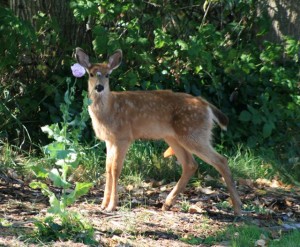 Integrate Rather than Segregate:
Integrate Rather than Segregate:
- Integration is all about relationships between any combination of plants, animals (domestic, wild, human, microbial), earth, water, sky, patterns in nature – we are all connected, and the more connected we are, the more resilient we become. The question, then, is what are these connections – or what connections are missing – and how do we build on these interrelationships?
- What are the zones on this particular site? How do our work and traffic patterns overlap between and connect different zones? How can we better optimize pathways that lead to better efficiencies of common tasks with the least disruption to nature? What things can be more conveniently placed along daily paths? How can we make zones 1 and 2, in particular, more efficient? (Small, slow solutions!)
- Location issues: Where do we house small farm animals, route greywater, create a nursery / greenhouse, create a gathering area for family and community events? And how can these various elements serve the greatest number of purposes (functions)?
- How do various functions and relationships between components contribute to resilience and prosperity? What kind of backup systems do we have?
- A challenge with this site is that the projects and gardens are spread out all over the place; they are hard to water, mulch, and maintain. A mistake was made in doing too much too quickly. While not abandoning investments in outlying areas, we need to refocus on Zones 0, 1, & 2. Questions are: What can we do to better optimize these areas? How might we focus our garden areas, pathways, and watering systems? How can we make the home more energy efficient? What kinds of energy-saving and energy-capturing technologies can we incorporate in the house and shop to reduce our environmental footprint?
- Perennials grow more slowly but with deeper roots, are more efficient at mining minerals and nutrients from the soil and making the most of water resources. What are the perennials we can grow (especially perennial vegetables, since we rely more on annuals when it comes to veggies) and where can we place them so we can more easily take advantage of them (and where they can fit into the greater landscape)?
- What methods can we use that might be slower but are better in the long-run? For example, scything is slower for cutting grasses and “weeds,” but it keeps the body strong, gives timefor connecting with nature, kills fewer animals, and uses no fossil fuels. Plus, a single investment can last generations. What other hand tools might we use that represent more sustainable technologies?
- In designing or retrofitting some of the systems, are there some things that might be better done if we build a small prototype before jumping into it too quickly? For example, a small solar hot water heater, drip-line watering system, or aquaponic setup.
- Now that the canopy layer has been planted in many areas, how might we best fill in the understory layers to make gardens that function more like guilds?
Use & Value Diversity
- Like our own health, the health of a honeybee relies on diversity in its diet. Similarly, an ecosystem is stronger when there is a multitude of components that comprise the system. Monocrops do not occur in nature. We are currently growing over 300 plants – but diversity for diversity’s sake misses an opportunity for synergies. The question, then, is how do we combine diverse plants and elements to maximize benefits to one another and strengthen the entire system? I.e., how do we ensure that each plant has what it needs (soil, water light) and is in a community (i.e., guild) in which different plants occupy identified niches supportive to the whole?
- How do we create redundancies in these systems (which build stability and resiliency)?
- How can we create habitat, build soil, confuse pests, attract beneficials, and increase yields through diversity?
- What can we plant (and what methods can we use) to ensure there is food for pollinators throughout the year?
- Honeybees and many other pollinators prefer clumps or patches of flowers. How might we plant things in groups that still provide a diversity within a garden area (i.e., not becoming a monocrop)?
- Applied to making a living, what different things can we grow, make, build, sell, trade, teach?
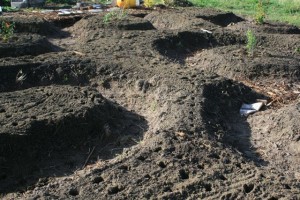 Use the Edges; Value the Marginal
Use the Edges; Value the Marginal
- What are the different types of edges on the site? Land/water, open field/shady forest, field/blackberry brambles, rock pile outcropping/garden, raised beds/sides, fence/garden, building/garden, spiral gardens, flat area/pit, etc. Where are these contrasting areas and where can we add more? Which of these are most productive? How might we best use the edges to increase interactions, diversity, and resiliency?
- What patterns do the edges take (wavy, lobular, spiral, zig-zag, branching, circles, etc.) – and does it make sense? How might the size of the area and the type of edges facilitate (or hinder) various tasks like mulching, watering, harvesting?
- What are traffic patterns of wildlife within the greater area and where do they cross within this site? What do we see as beneficial and what as deleterious; how can we enhance their numbers while minimizing too much destruction, i.e., keep things in balance (share the surplus, but still be able to obtain a yield!) How do the “edges” encourage diversity of predator/prey relationships and enhance ecosystem diversity?
- What kinds of plans can we make for change and the evolution of our gardens? What is likely to be the succession process? And how can we use them to our advantage?
- How will the continued growth of shrubs and trees change the landscape, the microclimates, the edges? Will the gardens require more outside input (water, nutrients, light?) as a result – or less? How will the kinds and numbers of animals that live in these gardens change as the gardens evolve?
- How will the yields change with the evolution of the design (in terms of ecosystem function and also material yield for human use)? How and what proactive measures might we take to enhance that process?
- We are currently planting many of our annuals along the edges, which typically get more sunlight – and also using annuals as temporary placeholders between small trees and shrubs. When these canopy and mid-level plants grow larger, what perennial, partial shade-tolerant plants can take the place of the sun-loving annuals?
- What kind of redundancies or backup systems do we have in case of sudden, dramatic change, catastrophic events, extreme weather, etc?
- What kinds of changes are normal within the changes throughout the year – how do we anticipate and prepare for changing seasons? (Example: planting green manure crops that will die over the winter and create mulch and nutrients for soil).

